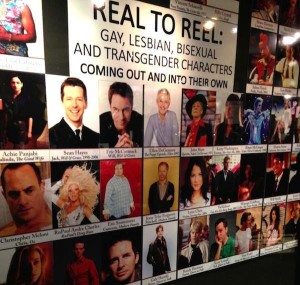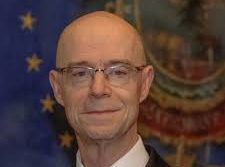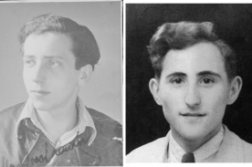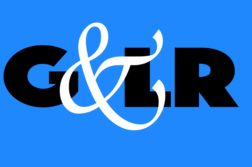Reel to Real: Portrayals and Perceptions of Gays in Hollywood
Curated by Bob Pranga and Steve Nycklemore
 THE INTERSECTION of Hollywood and Highland is undoubtedly the center of tourism in Tinseltown. The Dolby Theater, Grauman’s Chinese Theater, the Wax Museum, and countless other destinations vie for the attention of visitors from all over the world. Just south of Hollywood Boulevard is the Max Factor building, a sprawling art deco structure where the makeup pioneer worked his magic. Now home to the Hollywood Museum, the building alone is worth the price of admission.
THE INTERSECTION of Hollywood and Highland is undoubtedly the center of tourism in Tinseltown. The Dolby Theater, Grauman’s Chinese Theater, the Wax Museum, and countless other destinations vie for the attention of visitors from all over the world. Just south of Hollywood Boulevard is the Max Factor building, a sprawling art deco structure where the makeup pioneer worked his magic. Now home to the Hollywood Museum, the building alone is worth the price of admission.
A current exhibition, Reel to Real: Portrayals and Perceptions of Gays in Hollywood, occupies the entire third floor—and it is fascinating. Presented by the Hollywood Museum in partnership with L.A. City Council member Mitch O’Farrell and ONE National Gay and Lesbian Archives, the exhibit covers nearly 120 years of queer Hollywood history, from an image in the 1895 short film commonly called “Gay Brothers,” which features two men dancing together, to artifacts from HBO’s The Normal Heart and a comprehensive display of the gay wedding from Days of Our Lives aired last April.
Co-curator Bob Pranga says that he was “thinking about the comfort level of our visitors, many of whom would not be especially interested in a ‘gay’ exhibit. We tried to mix genres and people and to cover this expansive history. The title, Reel to Real, is meant to suggest how a person’s life had to be constructed to work in the industry back in the day, and how different it is now.” The installation includes a wide range of issues and information, including performances in front of the camera, set designers, hair and makeup people, and politics, which is represented by material from Milk and from a display featuring supportive comments about same-sex marriage from Brad Pitt and Angelina Jolie.
Among the more mainstream content, there’s plenty of Ellen DeGeneres, whose coming out in 1997 was a watershed event in pop culture. The Clampett’s truck from Beverly Hillbillies is part of the display on Nancy Culp, who portrayed everyone’s favorite 1960s career woman, Miss Hathaway. Juxtaposed to the Clampett’s jalopy is the classic black Thunderbird convertible with its leopard skin interior in the space dedicated to camp heroine Elvira, Mistress of the Dark. As Pranga notes, “Cassandra Peterson says that she learned about makeup and costumes from working in gay bars with drag queens.”
The first panel in the exhibit features a crucial quotation from Vito Russo’s The Celluloid Closet: “We have cooperated for a very long time in the maintenance of our own invisibility … and now the party’s over.” A video screen looping segments from the documentary based on Russo’s book accompanies the quotation and sets the scene for the whole experience.
There’s much more to see in this fascinating queer history. From the pink-tiled powder room in Roddy McDowell’s house (you’ll see photos of Mae West and Christopher Isherwood, among many others), to costumes belonging to Liberace and female impersonator Charles Pierce, to the Oscars for Milk, and to the 2014 glaad award and dress belonging to Jennifer Lopez, there’s something here for everyone. More than a thousand items are displayed elegantly and with a touch of gay flair. The visitor feels a little bit like Dorothy must have felt when she woke up in the colorful land of Oz. Her ruby slippers are there, too, right by a screen showing clips from Brokeback Mountain.
Perhaps most striking is the “Wall of Portraits,” images of more than a hundred actors and actresses who’ve played gay over the years, including Tim Curry as Dr. Frank N. Furter, Quentin Crisp as himself, Laverne Cox as the transgender star of Orange Is the New Black, and a young Wilson Cruz in My So-Called Life. It is a walk down memory lane, but it’s also an educational display, showing the range and the significance of gay visibility in Hollywood. The museum has received a lot of positive feedback, and, as museum founder and president Donelle Dadigan observed, “our visitors are enjoying the opportunity to lean more about the history of Hollywood through Reel to Real, and we see it as contributing to greater understanding and acceptance, both in Los Angeles and in all corners of the world.”
Reel to Real, which is sponsored by Wells Fargo Foundation and was installed in conjunction with OutFest, the gay and lesbian film festival that started in L.A. more than thirty years ago, is open until September 28. Whether you’re more interested in RuPaul or Paul Lynde, you’ll find lots to love at the Hollywood Museum.
Chris Freeman teaches English and Gender Studies (including a course called “Queer LA”) at the University of Southern California. His new book, The American Isherwood, will be published at the end of 2014.






